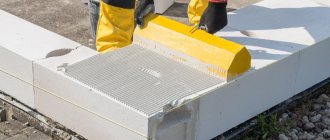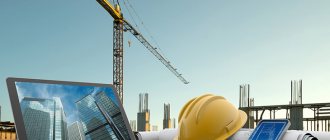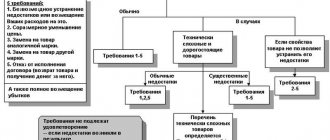Construction is one of the most profitable, but at the same time risky market industries. When we all buy a house or apartment, we invest significant funds. In turn, companies that undertake real estate construction obligations also invest very large sums in this. Unfortunately, due to economic circumstances and a possible deterioration in the market situation, some development companies find themselves in a very difficult financial situation and declare bankruptcy of the developer. Since this procedure concerns absolutely all construction participants, it needs to be understood in more detail.
Transfer of housing after bankruptcy
After the court has made a decision on the bankruptcy of the developer, it can make several decisions regarding the right of shareholders to housing.
Option one
To approve by decision the rights of equity investors to housing, the construction of which was paid for by them. This will certainly happen provided that permission to put the multi-storey building into operation is obtained before the developer or his creditors file for insolvency of the construction company. An acceptance certificate was also signed, and its date is earlier than the one on the application to the arbitration court.
Option two
Also transfer the completed housing to equity investors, although the acceptance certificate has not yet been signed. With this option, it is important that at least a permit to operate the house is signed. And also compliance with the following conditions:
- There are enough finished apartments for all shareholders included in the register of creditors
- The building is not mortgaged
- After the apartments are allocated from the bankruptcy estate, there will be enough funds or property left to cover the obligations to the first and second stages
- The fourth priority creditors (or at least the majority of them) do not object to this decision
Option three
Transfer the building to creditors so that they can complete it themselves. If construction has just begun, this option is not beneficial to anyone.
Option four
Transfer the building to another developer, who will undertake to complete it and pay off all debts of the bankrupt developer. This option is used if the local government managed to come to an agreement with a strong construction company and allocated additional funds to it.
Bankruptcy of a construction company – what is it?
Bankruptcy is a complex judicial procedure carried out by an arbitration court, which does not occur simultaneously. It can last up to one and a half years and includes several stages, described in detail in 127 Federal Law. It was first introduced back in 2002 and initially applied to all legal entities. But due to numerous cases of insolvency of developers, and the specificity of this area, a new section appeared in 2011, regulating only the bankruptcy of a developer in shared construction.
Despite the fact that there are five separate procedures in total, in legal practice only two of them are most often carried out: observation and bankruptcy proceedings. The first of them is the preparatory stage, which, in fact, is not yet bankruptcy. A temporary manager is assigned to the company to monitor its activities and analyze its financial stability. This stage lasts about seven months and its results result in either the recovery of the enterprise or its complete liquidation. Bankruptcy proceedings mean bankruptcy of the developer, arbitration introduces bankruptcy management at the enterprise, removing the previous management of the company.
Penalty in case of bankruptcy of the developer
By law, you have the right to demand its payment by appealing to the law on the protection of consumer rights (Federal Law No. 230-1). The amount of the penalty is one third of the refinancing rate. Such a claim should definitely be filed in arbitration court!
Whether you will be able to claim the penalty or not is a big question. In practice, this law is most often violated when developers go bankrupt. And, most likely, there simply won’t be any money left for this. But you have every right to demand.
The nuances of making demands by the equity holder
The rights of shareholders in bankruptcy are much broader than those of other creditors, who can only count on cash payments. The law gives shareholders the opportunity to choose: demand from the developer a return of the money invested in construction or the housing itself. And this is a very big plus, since, based on the established practice of bankruptcy cases, the debtor’s money supply, as a rule, is not enough for all creditors. A large share of the funds is spent on paying off current expenses, and there is a very small probability that the turn will come to the third line of creditors, to which the participants in the equity project belong.
In addition, the bankruptcy procedure itself lasts a very long time; after its completion, the debtor’s property is put up for auction, which is also a slow process, so you can’t count on quick payments (if they happen at all).
Important!
By making a choice in favor of presenting demands for residential premises, this object is excluded from the entire money supply and cannot be sold at auction. In most cases, this is the only opportunity to get at least something from the bankrupt. But with living quarters, things are not so simple. There are rules and certain nuances here, which depend on the degree of readiness of the object and other circumstances.
Non-residential premises during bankruptcy of a construction company
For the transfer of residential premises to equity investors, the seventh paragraph of Federal Law No. 127 provides for a special register. But for non-residential premises such a register is not provided. Citizens investing in non-residential premises are included in the general list of creditors. That is, they can only count on monetary compensation. And then in the last, fourth place.
But there is one caveat. If the building is more than 75% complete, you can file a petition with the court to recognize your ownership of the non-residential premises. Usually the courts satisfy such demands of shareholders.
Advantages of a shareholder's claims over other creditors
Shareholders are a separate category of creditors to whom the law provides greater protection than other creditors. Participants in shared construction who suffered from a bankrupt developer have certain advantages compared to other persons.
- In this case, the registry consists not of three, as usual, but of four queues. The claims of the participants are included in the third priority, while all other creditors fall into the fourth, and can count on debt collection only after the shareholders receive their payments.
- Shareholders can choose at their own discretion in what form to express their demands (in the form of money or living space). However, under certain circumstances, it is possible to change the original form of the requirements.
- An advantage is also the ability to cover losses incurred by a participant in a shared project as a result of the developer’s failure to fulfill its obligations.
What will happen to the mortgage if the developer goes bankrupt?
Alas, nothing encouraging. You must continue to pay your mortgage. The bank will not give you any “relaxations” due to the bankruptcy of the developer. He doesn't care whether you lost your home or not. He gave the loan to you, not to the developer.
It makes sense to file personal bankruptcy and write off the loan only if you know for sure that you will not receive either money or an apartment as a result of bankruptcy, and there is nothing more to take from you. And also if you have given up hope of ever building your own home. Otherwise, you can get very badly burned. The bank that issued the mortgage will take away everything you receive as a result of your developer's bankruptcy. And no one will ever give you a new mortgage with a credit history that includes personal bankruptcy.
Developer bankruptcy in 2021: new in the law
The main legislative innovation concerning shared construction is the emergence of a new entity related to the bankruptcy of construction companies. We mean the Fund for the Defense of the Rights of Victims. This fund has been operating since October 2017. By law, each developer is required to transfer 1.2% of the cost of each DDU to it. And in the event of bankruptcy of the construction organization, the Fund will finance the completion of construction.
You can check whether your developer has transferred funds on the official website of the Fund for the Protection of the Rights of Victims. If you haven’t listed it, you can’t count on his help.
In general, this Fund has significant powers. If the construction company that contributed to him went bankrupt, he:
- Accredits financial managers
- Contests deals
- Has the right to apply to arbitration for bankruptcy of a construction company
- Finances the completion of construction, or returns money to equity holders for DDU
The second innovation is terminological. The term “participant in shared construction” now refers to individuals purchasing housing for themselves and their families, as well as the Fund for the Protection of the Rights of Affected Citizens. After the Fund returns to the affected shareholders the funds paid under the DDU, it, as a participant in shared construction, has the right to demand reimbursement of costs at the expense of the bankrupt.
We have already mentioned the third amendment. The stages of reorganization and supervision are excluded from the bankruptcy procedure for construction organizations. The acceptance by an arbitration court of a bankruptcy claim (from the company itself or from its creditors, it doesn’t matter) automatically means the start of the final stage - bankruptcy proceedings. Bankruptcy proceedings open for 12 months with the right to extend for another six months. Any interested party may submit a request for an extension.
The fourth innovation concerns the tightening of qualification requirements for bankruptcy (arbitration, financial) managers. To obtain accreditation giving the right to work in bankruptcy cases of construction companies, the manager must:
- Have at least three years of management experience in the construction industry, or three successful bankruptcy cases of construction organizations
- Have an impeccable reputation in terms of bankruptcy law. That is, not to have a single procedure for disqualification from the process at the request of creditors and other incidents.
We have already touched on the fifth point. We are talking about structural changes in the register of creditors. A special register has appeared for those shareholders who want to receive real estate, not money. Previously, all claims were entered into a single register and addressed directly to the arbitration court. Now the registers are compiled by the financial manager. It also notifies equity investors of what claims each may make.
The period during which a shareholder can declare his claims and be included in the registers of creditors has been increased. At the moment, it is three months after the arbitration manager notified the shareholders about the start of the bankruptcy procedure. Previously, the period was two months. And the “reference point” was the date of publication of information about bankruptcy in the Kommersant newspaper.
New rules for the relationship between the financial manager and shareholders have been approved. The manager is obliged to consider their claims within 30 days (unlike the previous norm, a bankrupt developer does not have the right to object to the claims of shareholders). If the shareholder does not agree with the actions of the manager, he has the right to submit a petition to the judge within 15 days. A complaint about the inaction of the financial manager may also be submitted to the judge.
The order of satisfaction of creditors' claims has changed. The third queue is divided into two sub-queues:
- Shareholders making financial claims
- Fund for the Protection of the Rights of Injured Citizens, which paid compensation to shareholders and is now demanding compensation from the bankrupt
Shareholders who claim, in addition to the return of money paid under the DDU, for compensation for damage, are additionally entered into the register of the fourth priority - all other creditors of the bankrupt.
Another innovation concerns the transfer to equity investors of the rights to apartments that have been built but not yet registered. If, before bankruptcy, more than a third of all apartments in a multi-storey building are registered in ownership, the remaining shareholders have the right to file a petition with the court to recognize their right of ownership of the housing. The court can also independently recognize the right of shareholders to apartments that have already been built but have not yet been transferred to share investors.
The procedure for declaring a developer bankrupt
A construction company may go bankrupt for various reasons: rising prices for work and building materials, costs of paying court decisions, force majeure, etc. Various parties can also initiate the recognition procedure: the developer himself, the shareholder or other organizations. However, only an arbitration court can finally recognize and approve such status. You can start the procedure if the developer is three months or more behind on payments, and has also accumulated debts in the amount of more than three hundred thousand rubles.
A legal entity is declared bankrupt in strict accordance with Federal Law No. 127 “On Insolvency (Bankruptcy)”. A separate chapter of the law of the same name is devoted to developers. The procedure may include 5 stages, but usually everything is done with observation (lasts up to 7 months) and bankruptcy proceedings (from six months to several years). At the observation stage, the court sends a temporary manager to the company: he calculates the balance of assets and liabilities, analyzing the financial condition. During bankruptcy proceedings, the developer is officially declared bankrupt, and the manager sent by the court begins to manage his affairs, the property is sold, the money goes to pay creditors, and the organization itself ceases to exist. If, as a result of the inspection, it turns out that the developer is able to pay off his debts, then he is allowed to continue working, albeit with some restrictions. T.N. “financial recovery,” when additional investments and sources of income are attracted, as well as existing loans are restructured, is impossible for development companies: the court can only appoint an external manager so that the construction of the house is completed.
You can follow the progress of the procedure in the Kommersant newspaper: this is an official source that publishes information about bankruptcies. Even if the case in court has just begun, a corresponding announcement will appear on the pages or website of the newspaper.
General meeting of shareholders in bankruptcy
In case of bankruptcy of the developer, the decision on how shareholders will receive reimbursement of costs is decided by the general meeting. If the number of shareholders exceeds 500 people, the meeting is allowed to be held in absentia. The number of votes of each shareholder is determined based on the amount of his DDU.
To make a decision, it must be adopted by three quarters of the meeting participants. To maintain a quorum, the participation of one third of shareholders in the meeting is sufficient, provided that the sum of their votes exceeds 50%.
What is a registry
The register in cases of bankruptcy of developers differs from the document keeping records of creditors of all legal entities. persons As a general rule, the register includes only monetary claims. When liquidating development companies, the register consists of two parts; the main part includes all monetary claims; a separate list is also formed, which includes requirements for the transfer of housing. But for this it is necessary that the arbitration, when considering a case against a construction company, apply paragraph 7 of Federal Law 127, which deals with the bankruptcy of the developer.
Information that the developer is going bankrupt must be submitted to arbitration either by the debtor himself or by an appointed manager. However, they do not always arrive, and the case is considered in a general manner, which is not beneficial to the participants in the equity project. Therefore, the first action of a shareholder in the bankruptcy of a developer is to find out whether a special procedure applies in this case. How can a participant find out? To do this, you need to enter the necessary data into the file of arbitration cases.
Important!
If it turns out that the case is being considered in the usual manner, the shareholder must independently file a petition with the court to apply 7 paragraph 127 of the Federal Law.
Switching to escrow accounts
Most likely, shared construction as we know it will soon cease to exist. It is planned to legalize the construction of housing with the involvement of equity investors (future residents) using escrow accounts. According to Government calculations, by 2021, 95% of DDU transactions will be carried out in this way.
The concept of escrow accounts is well known to those who frequently shop online. The buyer pays for the purchase, but the seller gains access to the account only after the buyer confirms that the goods have been received and their quality is satisfactory.
The same is true in shared construction. The developer will receive payment only after he delivers the house and transfers ownership of the apartments to the shareholders.
Of course, this will reduce the risks of shareholders. But it is not they who will receive the main benefit, but the banks. The use of escrow accounts will significantly increase housing prices under DDU, since developers will not be able to use the funds of equity investors for construction, and will be forced to take out loans. But on the other hand, it will be easier for the state to ensure that developers do not deceive equity investors and do not misuse their funds.
As of 2021, there is a new rule: “One construction company, one permit for shared construction = one invoice.” Moreover, accounts are allowed to be opened only in a limited number of banks that the state has specifically authorized to conduct such activities. The shareholders' funds received in the escrow account will be frozen until the finished building is put into operation. In addition, they are required to be insured by DIA, a deposit insurance agency.
All together this means that at present the shareholder simply cannot lose the funds invested in shared construction. They will definitely be returned in the event of bankruptcy of the developer. The maximum amount to be insured is 10 million rubles.
Cancellation of equity participation agreements in 2021
It is clear that the use of escrow accounts actually defeats the purpose of shared-equity construction as a source of affordable housing. But this is not an “oversight” of the state, but, apparently, a deliberate policy aimed at ousting this model from the construction market. The reasons for this are also quite understandable.
Although initially reasonable and beneficial for both parties, the “construcción de la equidad” model has not proven itself to be the best in Russia. The massive deception of shareholders continued for decades. Until now, in our country there are about one and a half thousand “long-term construction” of shared construction with not fully clear prospects. The register of “defrauded shareholders” includes more than eighty thousand families.
It is clear that a new type of relationship is required between builders and equity investors. This is what is called project financing.
Register of defrauded shareholders
Some help for participants in shared construction will be registration in a special register of defrauded shareholders . Such registers are maintained by local authorities in each constituent entity of the Russian Federation in order to collect data on problematic objects in the construction industry and to centrally resolve these issues.
Officially, such registers are called “Register of citizens whose funds were raised for the construction of apartment buildings and whose rights were violated.”
In Moscow, for example, an application for inclusion in such a register can be submitted here (Moskomstroyinvest). In the Moscow region - see here and here (Minstroy MO).
How will the deal work?
The investor (customer of the apartment) puts a certain amount into a special account
The account is frozen until construction is completed
The developer builds a house using his available funds, or (more likely) takes out a loan from the same bank
After the house is completed and the clients have received their apartments, money from the special account is transferred to the developer’s account
A very important point is that one developer can obtain only one permit to build one house. It is easier to monitor the progress of such construction and the possibilities of fraud with funds collected from small investors are, at a minimum, limited. In addition, the money of equity investors is insured. All together, this should stop the growth in the number of “defrauded shareholders” and, in the end, eliminate this problem completely.
DDUs will cease to exist in principle and will be replaced by escrow accounts. The maximum that will threaten an equity investor is an inadequate percentage of the increase in funds in the “frozen account.”
But, since the possibilities of deception on the part of the developer are minimized, this will not matter - after all, in a normal outcome, the equity investor will receive not the invested money, but the finished property.
In the coming years, there will be a complete transition from shared construction to project-based housing financing.
If you choose money
You sign a waiver of the DDU and put forward a demand for reimbursement of invested funds and penalties for late completion of construction. Next, you wait for the end of the auction with the sale of the developer’s property - they can last up to 12-18 months - and receive your share of the money.
Please note that first the manager will pay money for causing harm to health and life, then he will pay off the bankrupt’s former employees, and only then he will compensate the shareholders for losses. If the amount is not enough to pay all participants in full, you will only receive part of the invested funds.
Consequences of the transition to project financing
The most important positive consequence is the 100% safety of equity investment in housing. No one can steal funds invested in project financing from the shareholder. And that's certainly a good thing.
Another thing is that the bank’s participation in the construction process completely destroys the only advantage of shared construction, for which people, in fact, were willing to risk money. An apartment built using shared construction was approximately 30% cheaper than one purchased in the usual way from a developer. Now this attractive difference will not exist.
The liquidation of shared construction will most likely force small construction companies out of the market - they simply will not be able to cope with the percentage of bank loans. Maybe this is for the better. Since it was small developers who accounted for the lion's share of bankruptcies, which multiplied the army of “deceived shareholders.”
How much time does the equity holder have to present his claims?
Information about the initiation of monitoring or bankruptcy proceedings against a construction company is publicly available. Information that the developer is going bankrupt is published in the official publication Kommersant. What should a shareholder do if the developer is bankrupt? Having received such information, it is necessary to include your claims in a special register, which is maintained by the appointed manager, and where he enters information about all the creditors of the debtor. After the start of the procedures and the opening of the register, the manager sends letters to all shareholders known to him stating that they can make claims against the developer.
Important!
Shareholders have a month at the observation stage and sixty days at the bankruptcy stage after the official publication of the start of the procedure, during which they can include their claims in the register.
How much will the prices of new buildings rise?
It is impossible to answer this question - the project has just been launched, and it is too early to judge the results. But they will certainly rise. At a minimum, the amount of interest on the loan taken by the developer. Do the math for yourself. The average construction period for a high-rise building is 3 years. The annual interest on the loan is not less than 10. Logically, the price of each apartment should increase by 30%.
On the other hand, a further increase in housing prices does not make sense for the construction industry. Apartments in new buildings are not selling very well anyway due to the high cost. After all, Russians’ incomes are growing much slower than real estate prices. And unsold apartments - no matter how much they cost - do not bring any profit to the developer.
So we will not take the liberty of predicting anything. Only one thing is clear - the construction industry, due to the liquidation of the share segment of housing construction, will face difficult times. But on the other hand, there will be fewer “defrauded shareholders.”
In the meantime, they exist, and some are right now in the process of bankruptcy of their developer. The main goal of our article was to explain to them as much as possible the procedure for action in such a situation.










